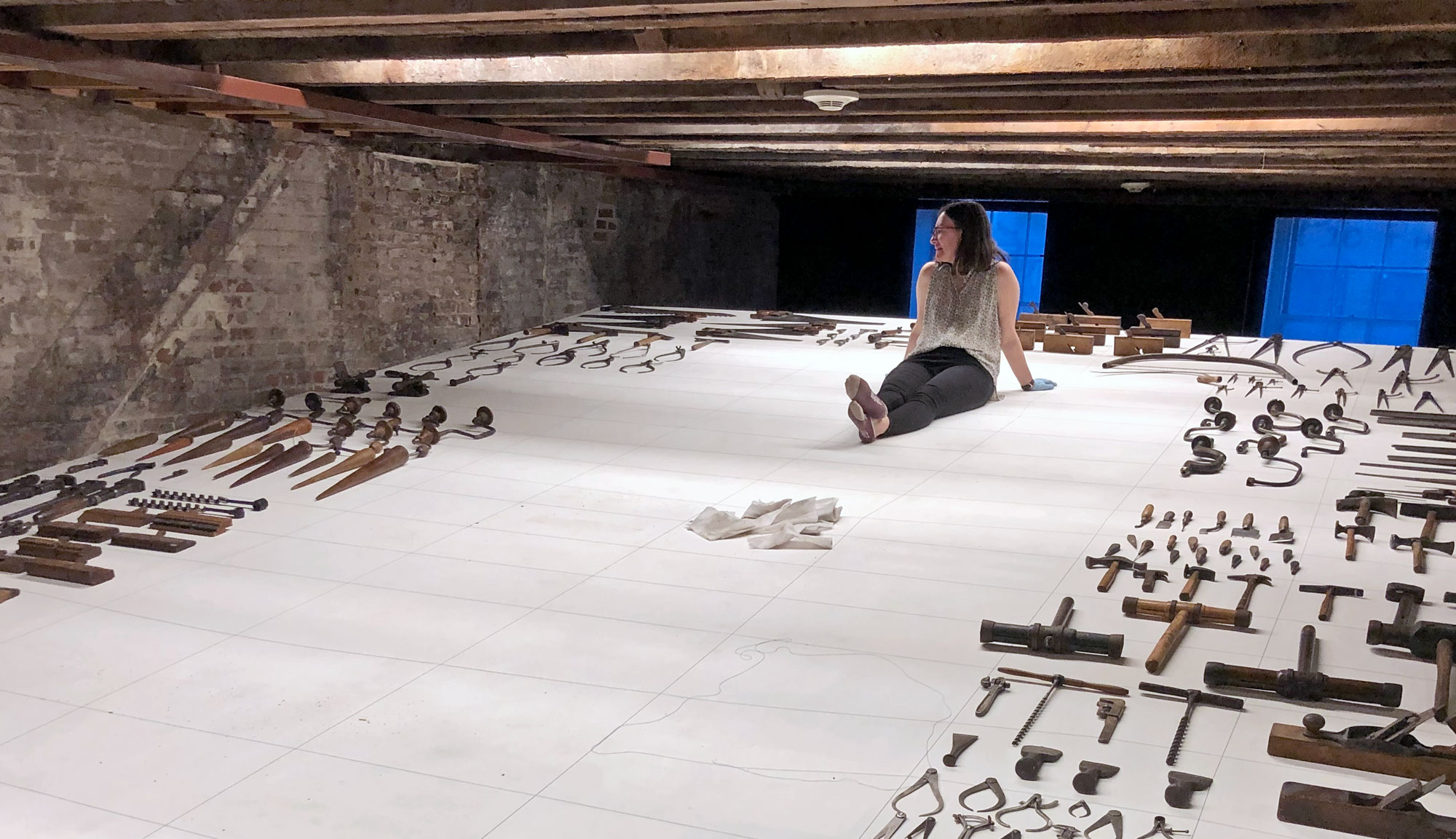Celebrating recent collections-based work achieved in challenging circumstances
A Seaport Museum Blog
by the Collections and Archives Department
December 11, 2020
Martina Caruso, Director of Collections
In these gloomy winter days, we’re all looking for good news. So for those of you who might not know much about collections-related projects over the past unprecedented months, I’d like to recognise and celebrate the achievements of the fabulous group of emerging professionals in the field of collection management, archives, curatorial, and digital culture studies I supervise and mentor.
Our year started full of hope and exciting challenges, including the creation of three new exhibitions in our introduction gallery spaces at 12 Fulton Street, and in the upper floors of Schermerhorn Row, in collaboration with a guest curator and other Museum departments. Our plans looked like the beautiful 75ft Norway evergreen tree from Oneonta, New York, chosen to be the Rockefeller tree for this year, but the past months looked a bit like the long road trip to bring the tree to New York City.
And like the tiny owl found inside the Rockefeller tree that became a symbol of resilience, my team too, had many moments of such resiliency.
The department was fully engaged throughout January and February on pre-pandemic projects.
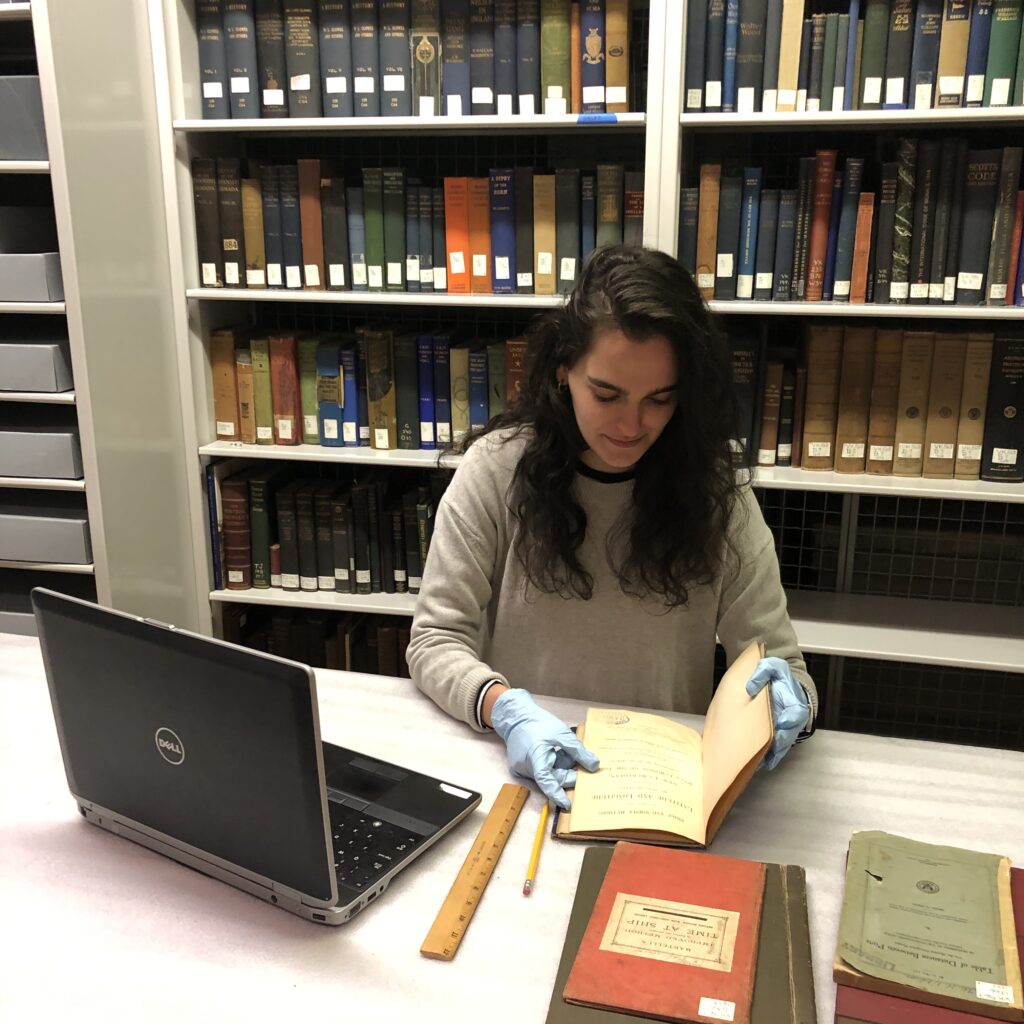
Sarah continued to study and adjust the inventory of the Museum’s rare book collection that she started working on in the fall of 2019. She kept a fairly strict routine throughout the inventory process, opening only one box at a time, being sure not to mix books between boxes.
Each book was photographed and cataloged into a spreadsheet developed to match our collection management system in the event of a future endeavor to include the rare books as a searchable collection within the database.
Typically, she was able to inventory and catalog about 25 books a day, close to 2 boxes, pending on the complexity and state of the items, as more difficult or fragile items necessitated a longer time spent during the inventory.
As of February 25, 2020, her final day working with the rare books in-person, she had inventoried 504 items in over 6 months, approximately half of the total rare books that we have to inventory, and they are now awaiting their continued care.
Carley and Emily continued their detailed inventory and digitization projects dedicated to our works on paper collections and ocean liner collections. The goals of both projects were to contribute to the Department’s efforts to maintain consistency, accuracy, and clarity across the Museum’s vast electronic collections database, to be able to to fully administrate the assets in our possession, and at the same time be able to effectively aid internal research for exhibitions, programs, digital content creations, as well as external research requests.
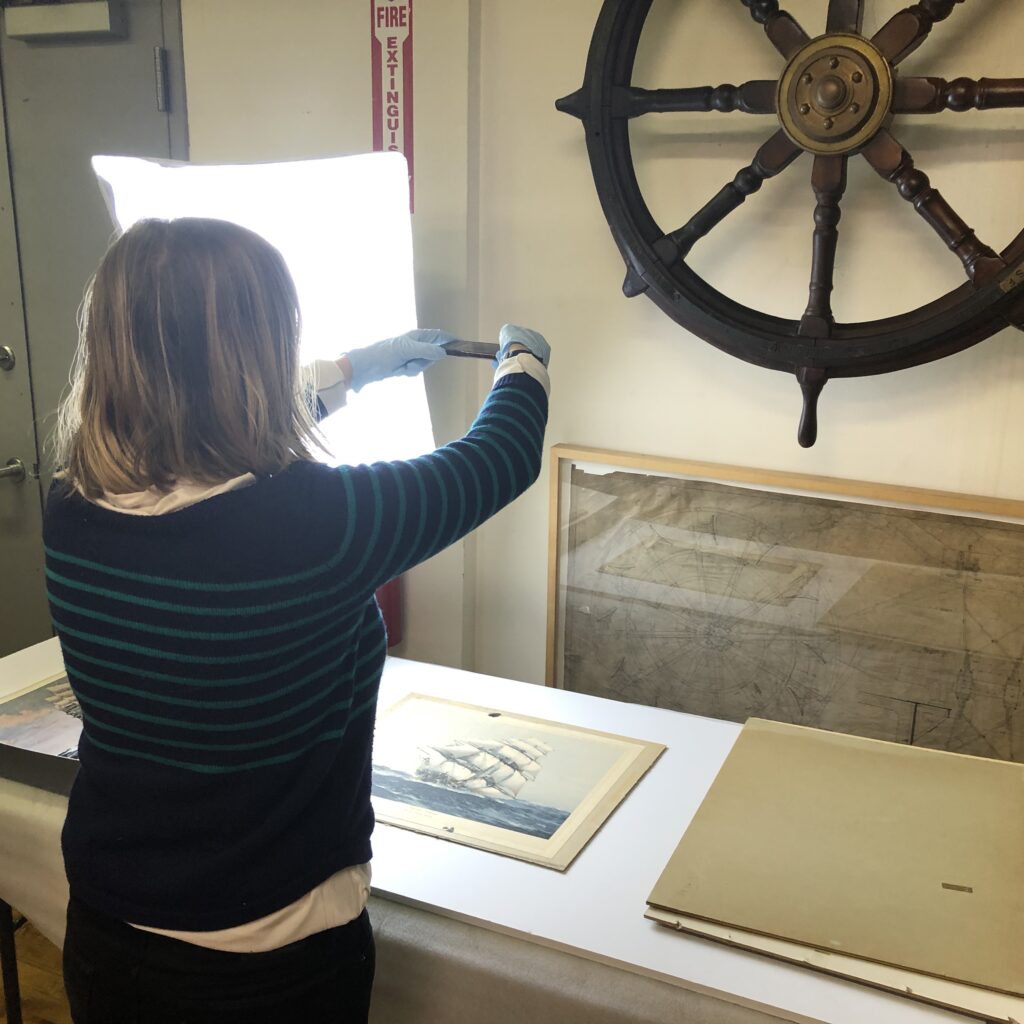
Both inventory projects primarily included updating database entries for works on paper and ephemera that did not have any accompanying photographs, did not have photos that adequately captured all notable features of the item or its conditions, or did not have photos that were high in quality.
A quick and easy photo-shooting station was set up in storage, to be able to take good enough photographs to continue our first wall-to-wall inventory in over two decades.
Most projects paused at the end of February in order to assist with inventorying, cleaning, and re-installing the tools and architectural elements displays in the Museum’s 4th floor galleries inside Schermerhorn Row. The entire team spent the first two weeks in March removing every item displayed on the exhibit platforms, cleaning, photographing, and condition-reporting the items, researching and updating their related database entries, cleaning the platforms, and finally re-installing the displays, in preparation for a Museum-wide reopening of the galleries that would ultimately not happen.
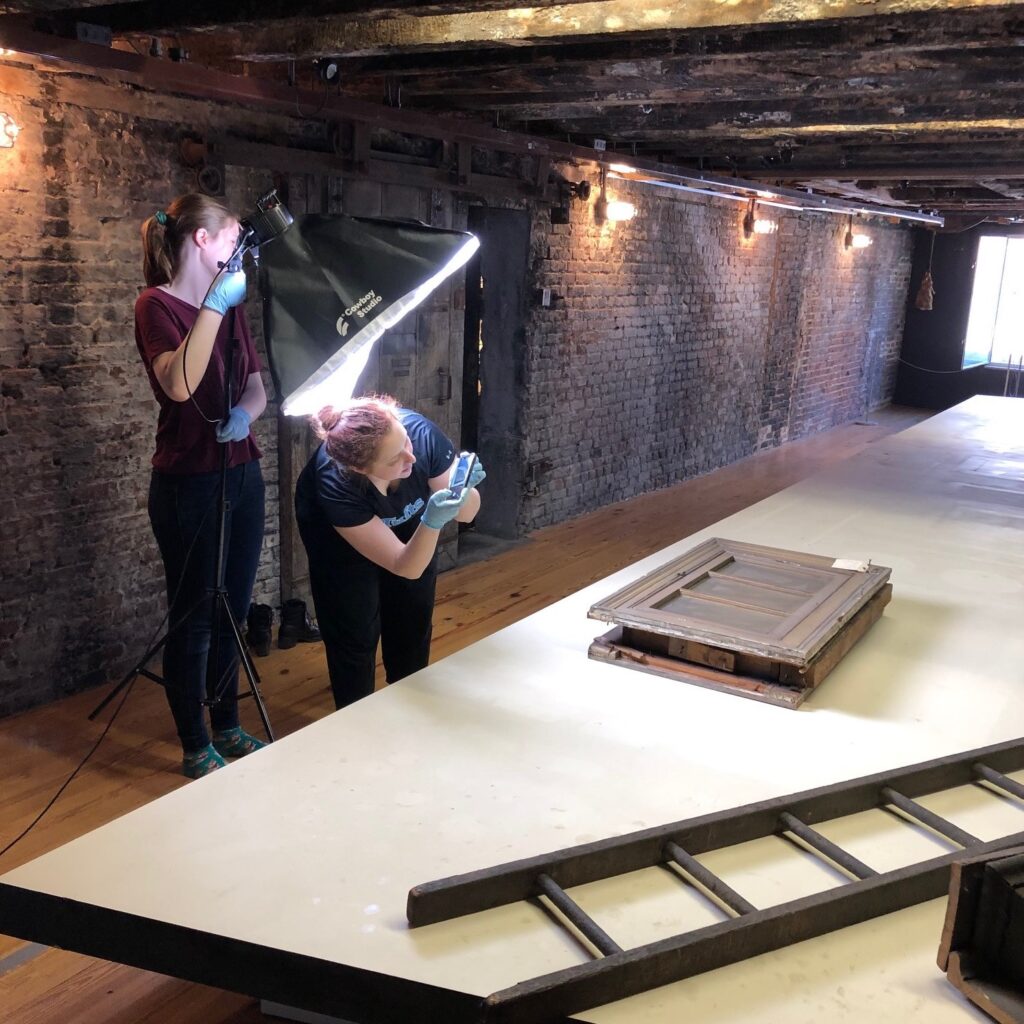
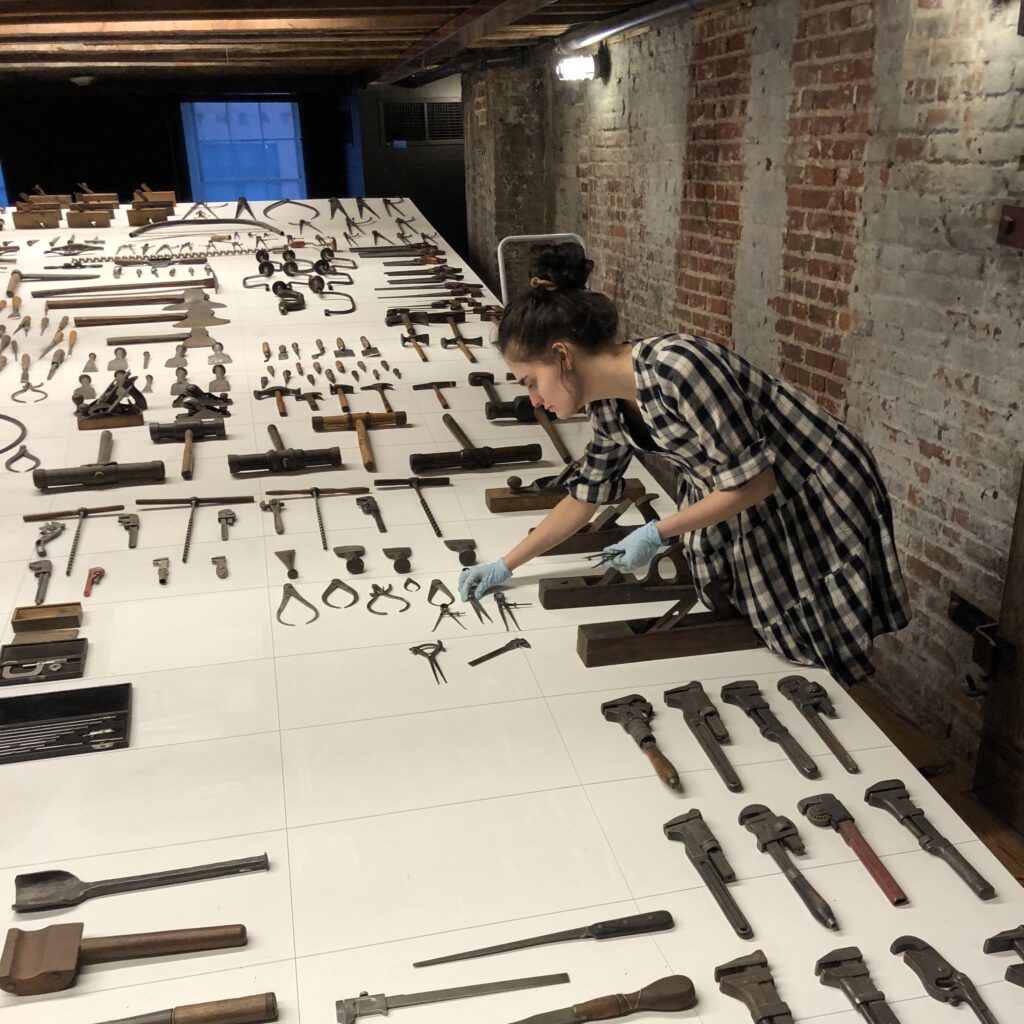
Noneless, the experience was a captivating and delightful one, as everyone, with their different interests and skills, jumped in and quickly adjusted into handling large and often rusted mechanical objects, became experts in condition reporting and identifying building components and tools; but maybe most importantly learned to work in teams, and built strong friendships with each other.
Michelle Kennedy, Collections and Curatorial Assistant
When it became clear in early March that the Collections team was going to have to work from home for the foreseeable future, the team had to pivot to not only working remotely, but also working even more independently. Spring 2020 was about wrapping up projects, clarifying our database policies and procedures, and writing more digital content for our social media platforms. We learned how to best communicate with each other, via video and text chat, and how to best share our collections with the wider world via Instagram, Twitter, and Facebook.
When we started working from home Sarah shifted her focus to drafting a collection policy for the rare books, including an analysis of the inventory she had done over the past six months, and ways to improve the process. This was a valuable time to assess the rare books project, even if it came at the cost of completing the inventory. Sarah made sure that the next person who worked with the rare books would know exactly what to do.
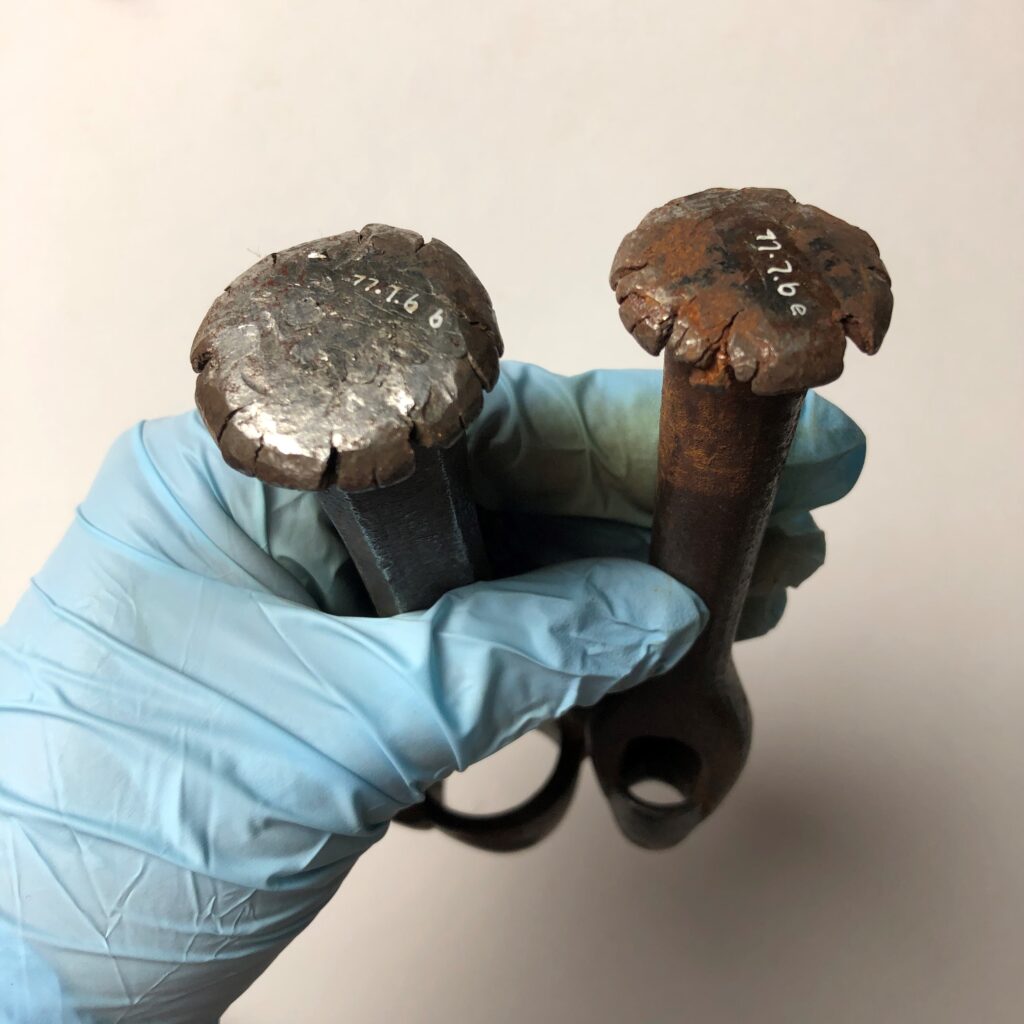
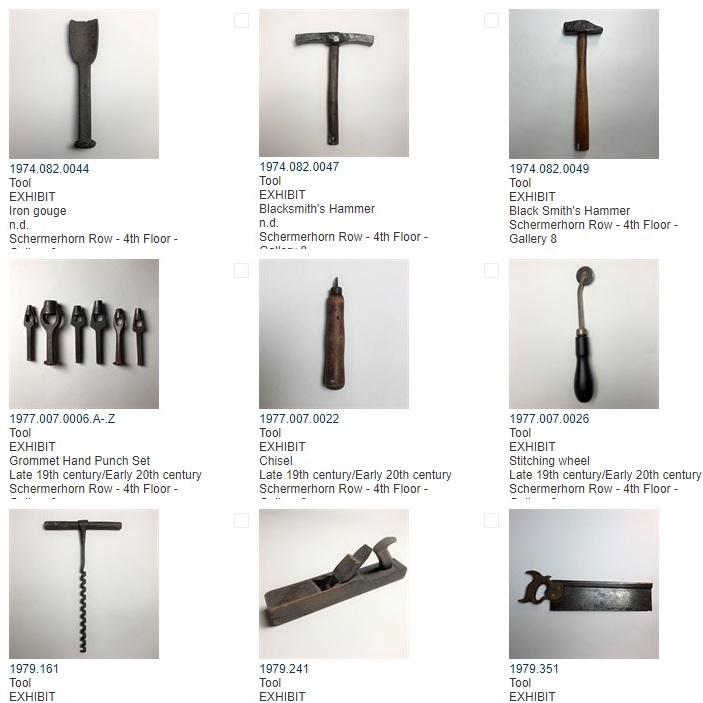
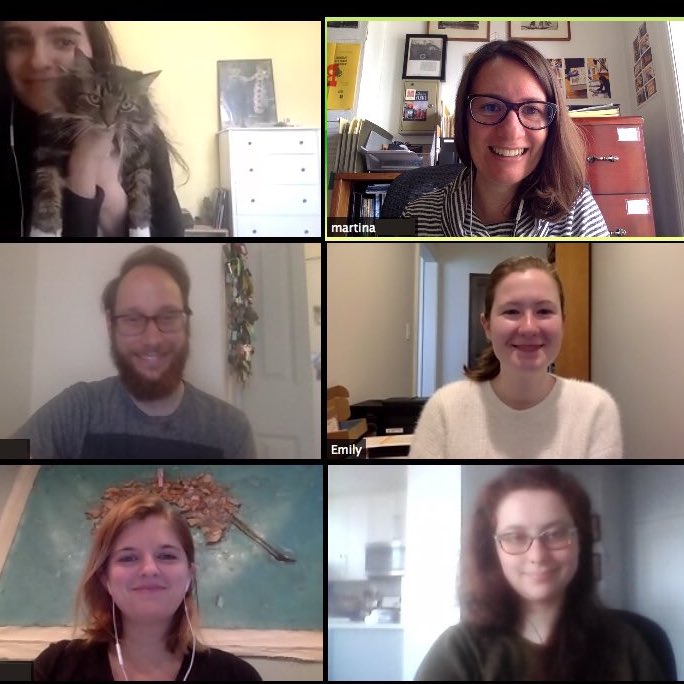
Emily, Carley, Martina, and I spent a lot of time working through our documentation of the tools and architectural elements displays we had completed just before working from home. Between the four of us, we had over 550 object entries to update in the database. Since each object was photographed from multiple angles, I would guess that we added nearly 2,000 new images to our database over March, April, and May!
Though a collections database is always part of collections-related activities, our database became even more critical while working from home. Our database, Collector Systems, is cloud-based which meant every member of the team had access from their personal computers. Even though we couldn’t work together in the office, our guidelines helped us stay consistent and thoughtful while adding new catalog information and files—when things are inconsistent in a database it’s both confusing and more likely the search function will miss relevant data.
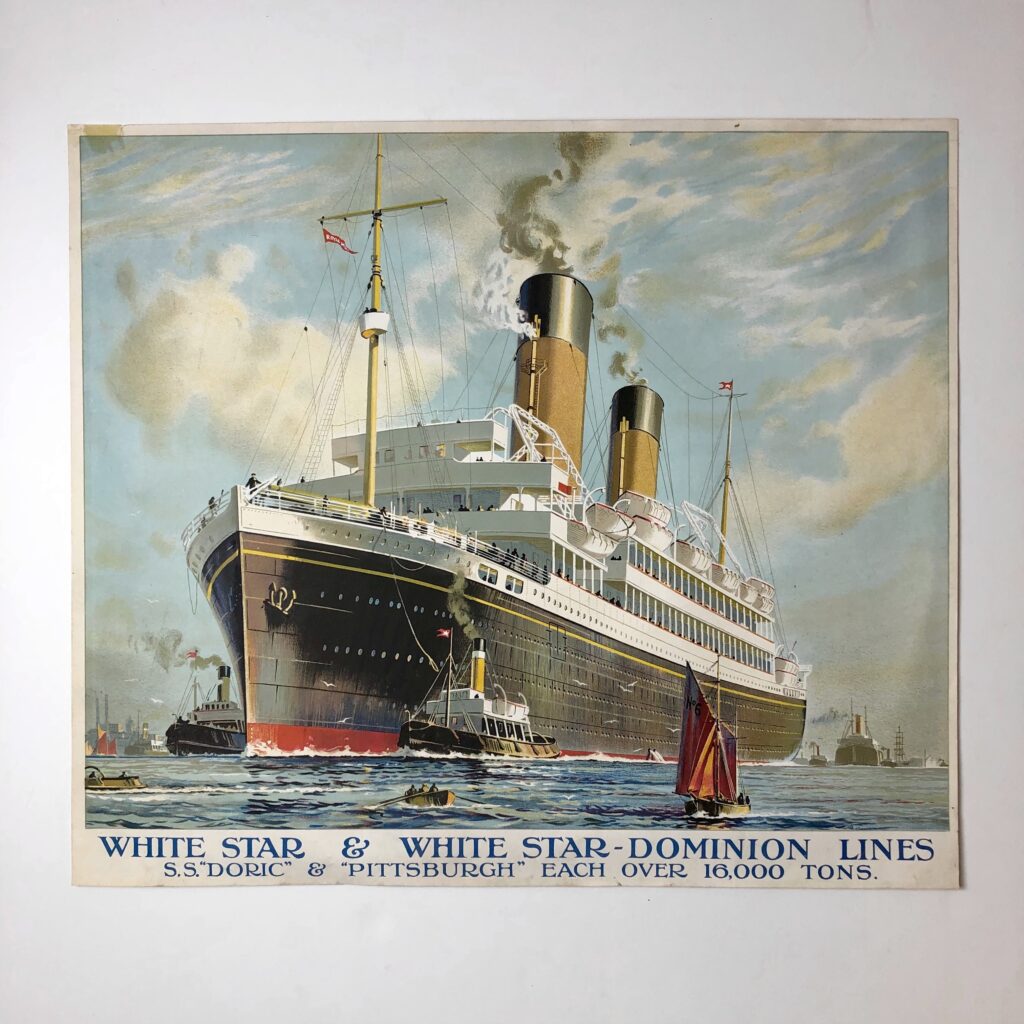
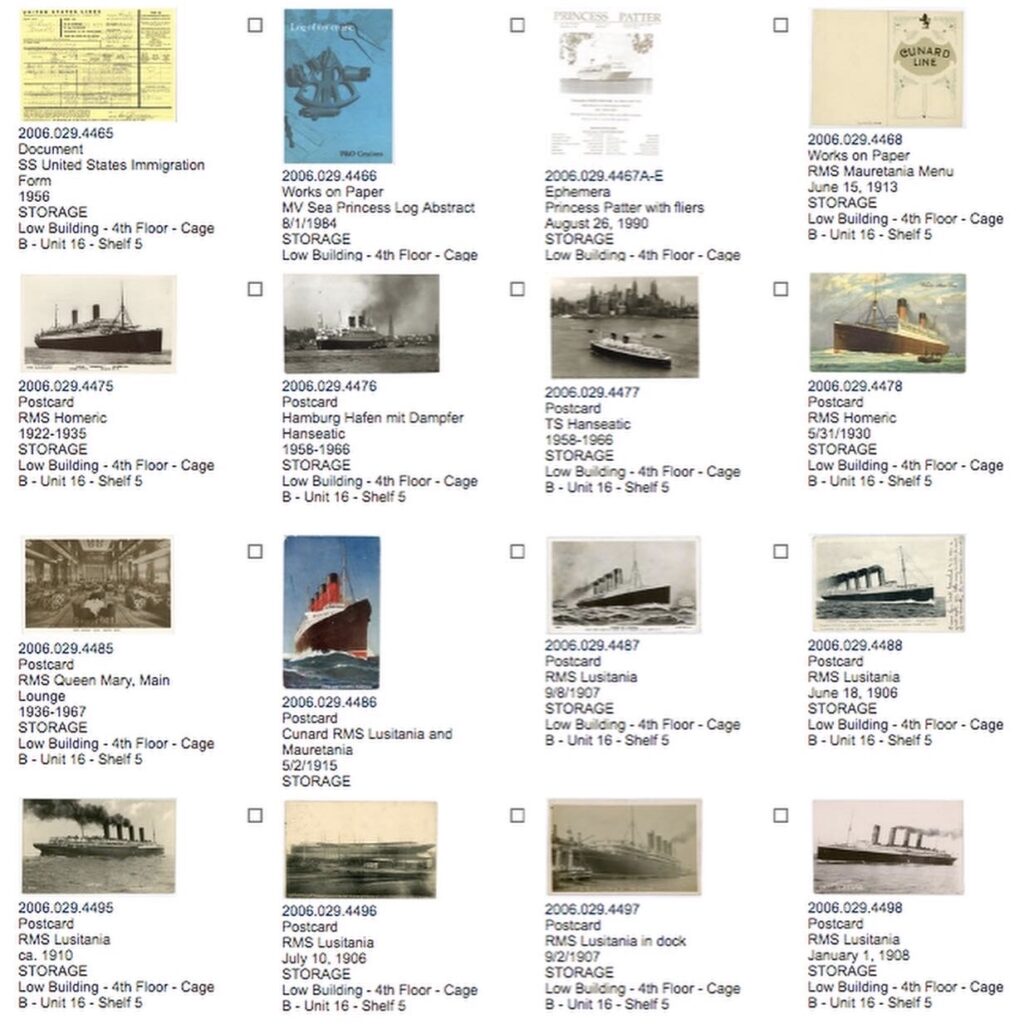
With a fresh appreciation for the database, Emily and I looked closely at how our ocean liner related collections were cataloged. Emily’s onsite work on the ocean liner collections meant that she already knew a lot about the topic, and her insights led to revised ocean liner database guidelines that increased consistency, accuracy, and clarity for the object entries. By the close of her internship she had updated over 250 entries.
Along with working on the database, my job was to write engaging stories about our collections that could be shared with the Museum’s new influx of global digital visitors. Connecting people to our collection, and to the greater story of New York City as a port city, became a priority. We knew we were far from the only people that were staying at home, and the collection has inspiring, thoughtful, and beautiful moments to share. When I felt most isolated during the pandemic, it was writing about how New York had weathered so much change over its history that reminded me to keep my head up. Reading the comments on our Facebook and Instagram were always bright points during the day!
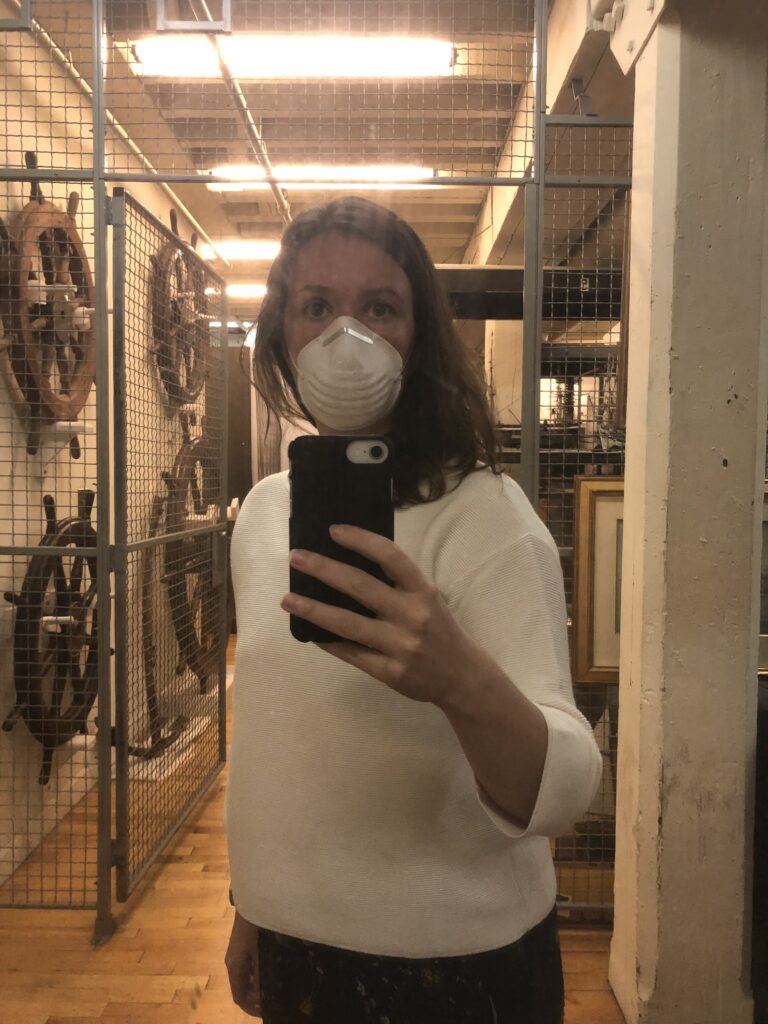
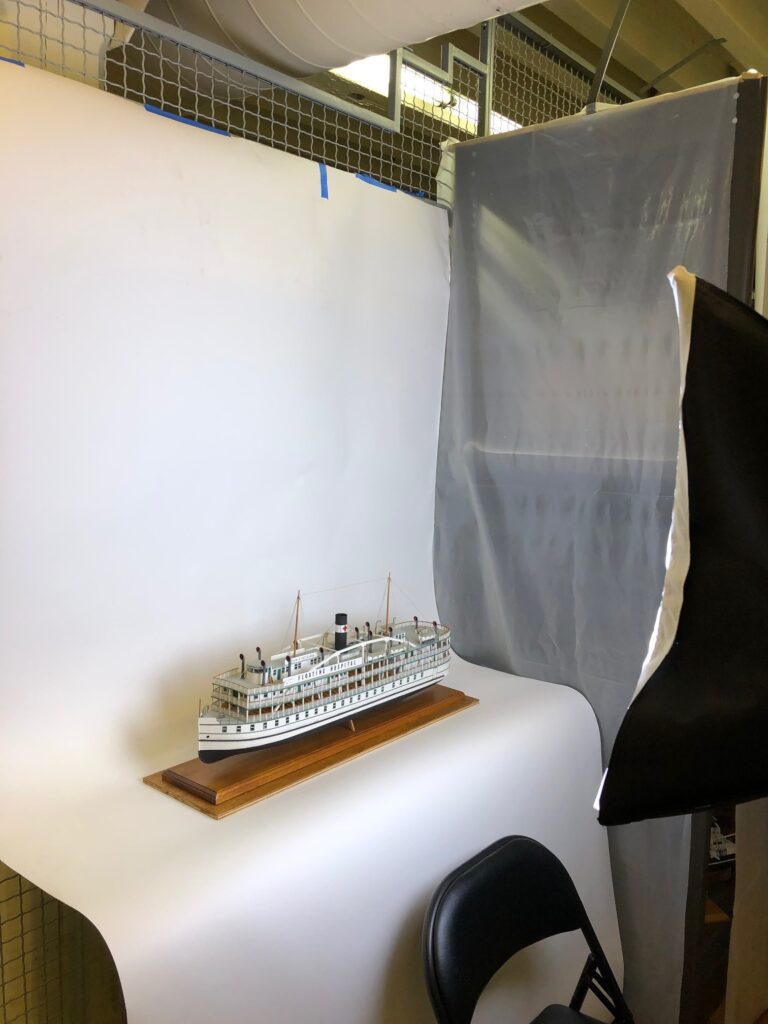
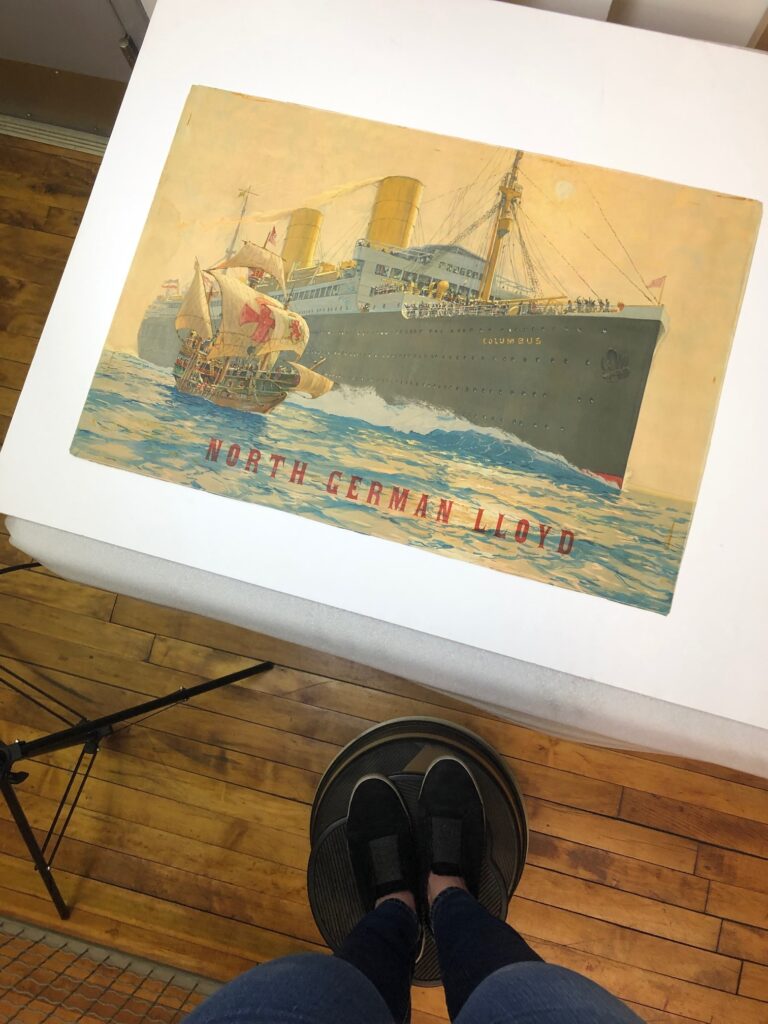
Thankfully even though we were largely working remotely, Martina was deemed an essential staff to take care of part of New York State cultural heritage and would work in collections storage once a week. Collections storage needs to be monitored for proper temperature and humidity, for pest infestations, and for potential nasty surprises like shelves bending or roof leaks. Additionally, Martina built into her on-site time, digitization and photography that could then be used remotely for the database. This also allowed us to have more image options to be shared on our social media channels and in our digital programs.
In May we partnered with Turnstile Tours to do a series of online conversations on maritime history. The first one was organized around the topic of hospital ships, shipyards, and shipwrights tools in New York City, and Martina led the presentation. If you are interested in re-watching it, head over to our website in the “Past Programs” section!
Lastly, a big positive aspect of the spring was the launch of the Museum’s newly redesigned website which includes more pages for exploring the collection, our acquisition criteria, our collection management policy available for download, and an updated section dedicated to research requests and image service.
Carley Roche, Collections and Archives Intern
What initially drew me into working in the museum field was collection care. I want to be a part of the action when it comes to proper object preservation and see that museum’s safely use their collections for education and exhibition purposes. Of course, I was saddened to be leaving the hands-on projects as we switched to remote work, but I am a fan of challenges, and I began a new cataloging and research project from home, working with the D.T. Valentine’s Manual of Old New York.
I spent my first few weeks at home re-writing the Museum’s collection management database entries ensuring the descriptions and information were all up to date while also making the prints more accessible through keyword searches. Having already been familiar with Collector Systems through my work at the Museum, I found this to be a fun assignment that allowed me to research New York City’s history.
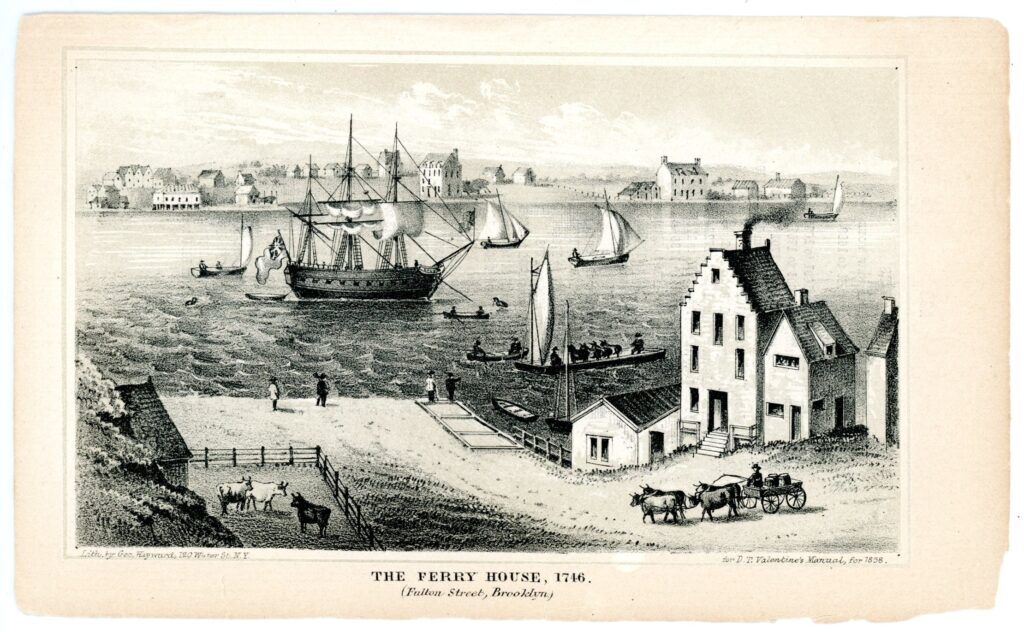
After completing this assignment I moved on to another database cleanup project centered on the Museum’s Newspaper Illustration Collection. This includes 19th-century newspaper pages from Harper’s Weekly, The London Illustrated News, Frank Leslie’s Illustrated Newspaper, and other publications from throughout the 19th and early 20th centuries. It was a fantastic project that gave me a glimpse into American life with a lot of the collection focusing on naval power during the Civil War. Being remote, I was unable to scan or photograph entries that do not currently have images in the database. However, I flagged these specific entries so a future intern or Collections team member will be able to easily complete this project.
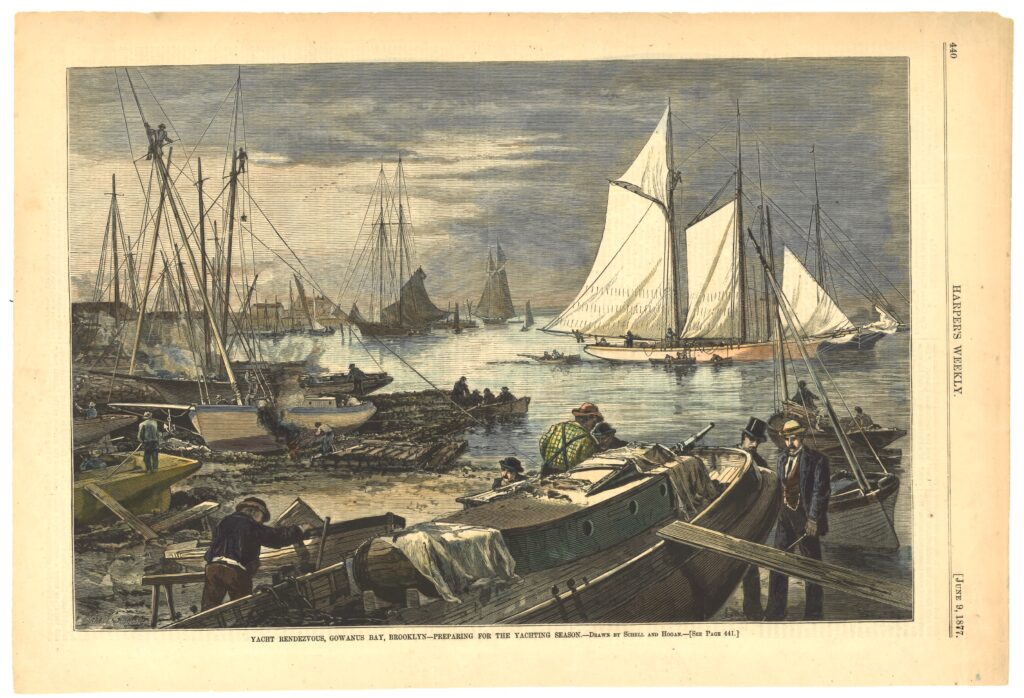
Using the digital repository HathiTrust Digital Library[1]Founded in 2008, HathiTrust is a not-for-profit collaborative of academic and research libraries preserving 17+ million digitized items. HathiTrust offers reading access to the fullest extent … Continue reading, I was also able to locate the prints and newspaper pages in the online library and linked them back in our database. This last step has already proven useful for a researcher who was notified of the HathiTrust resource because of our database. It is incredibly fulfilling knowing that the work one has completed has a positive impact on the work of another. I only hope that my completed database entries continue to aid future researchers as well as museum employees in future projects.
My first love has always been history and research. I enjoy browsing through documents, letters, pictures, videos—anything that will give me a full understanding of how people in the past lived. While cleaning up the database entries for Valentine’s Manual of Old New York I found myself drawn to certain prints, weaving a story out of their connections, and wanting to write more in-depth posts to share with the Museum’s followers.
Prior to going remote, Martina, Michelle, and I had discussed starting a blog for the Museum. While in lockdown, a social media poll showed us that the Museum’s followers wanted to see more of the Museum’s collection.
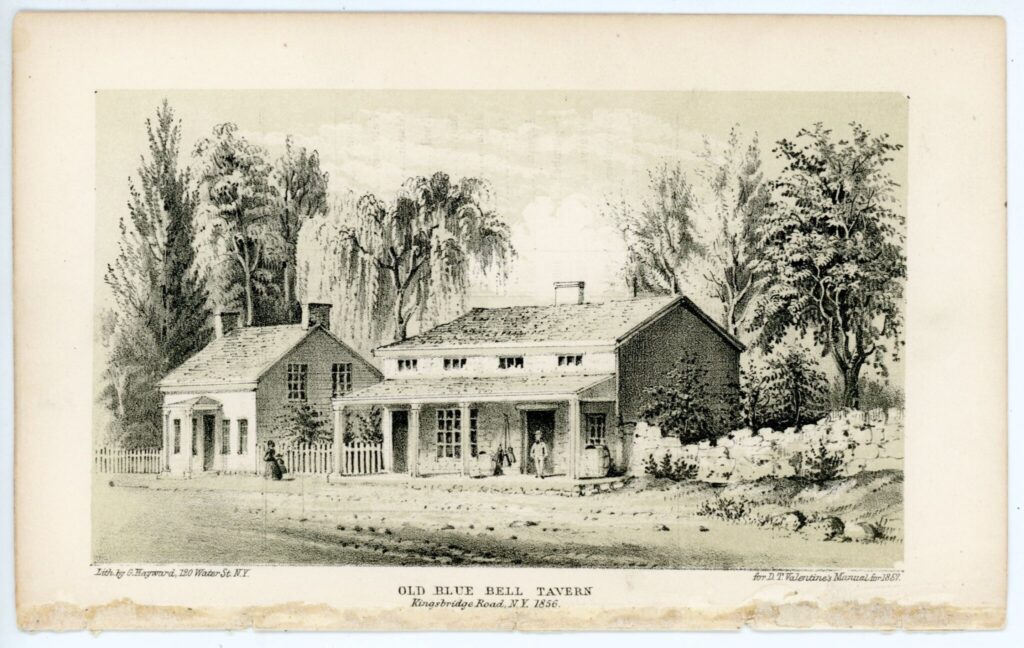
This presented us with the perfect opportunity to finally start a museum blog. My first post focused on taverns in New York City during the 18th and 19th centuries as I wanted something lighthearted and fun since we were still in the early months of quarantine. I am so happy to have played a role in the foundations of this blog as it has already allowed for fans of the Seaport Museum and of New York City history to see more of our collection and to learn a little more about this great city.
As an emerging museum professional, the pandemic presented a unique opportunity for myself and others breaking into the field. Individual museums, regional groups, and independent professionals created webinars for current and future museum workers to discuss everything related to collection care, education, social media, and general well-being in the age of Covid-19. Every week since March, there have been numerous one-off Zoom discussions or days-long digital seminars to keep everyone informed and connected.
These programs allowed for larger audiences to attend conferences that were once restricted by in-person travel and have provided emerging professionals like myself with the opportunity to participate in conferences we may not have been able to otherwise. It is strange to think that these webinars may not have happened without quarantine forcing everyone online. Still, I am grateful for the organizers for creating these online professional development discussions and seminars for everyone, and for Martina and Michelle who kept sharing and forwarding us links and presentations.
Mathieu Rivoal, Collections and Archives Volunteer
Before the initial lockdown in March of this year I was a Visitor Experience Educator Supervisor at the South Street Seaport Museum. Previously, in 2018, I was a Collections and Archives Intern working closely with the Museum’s ship models collections, performing condition reports and updating database entries with conditions, new images, and research information. I was extremely happy to have the opportunity to come back to work in the collections and archives of the Museum once the team switched to working remotely.
With my familiarity with the Museum’s database, and my knowledge of the French language, I began working with the objects in the collections relating to French ocean liners. This project mostly focuses on the Compagnie Générale Transatlantique (known as the French Line), while also including objects related to Compagnie de Navigation Sud-Atlantique, a subsidiary of the French Line and operated on the Europe-South America route.
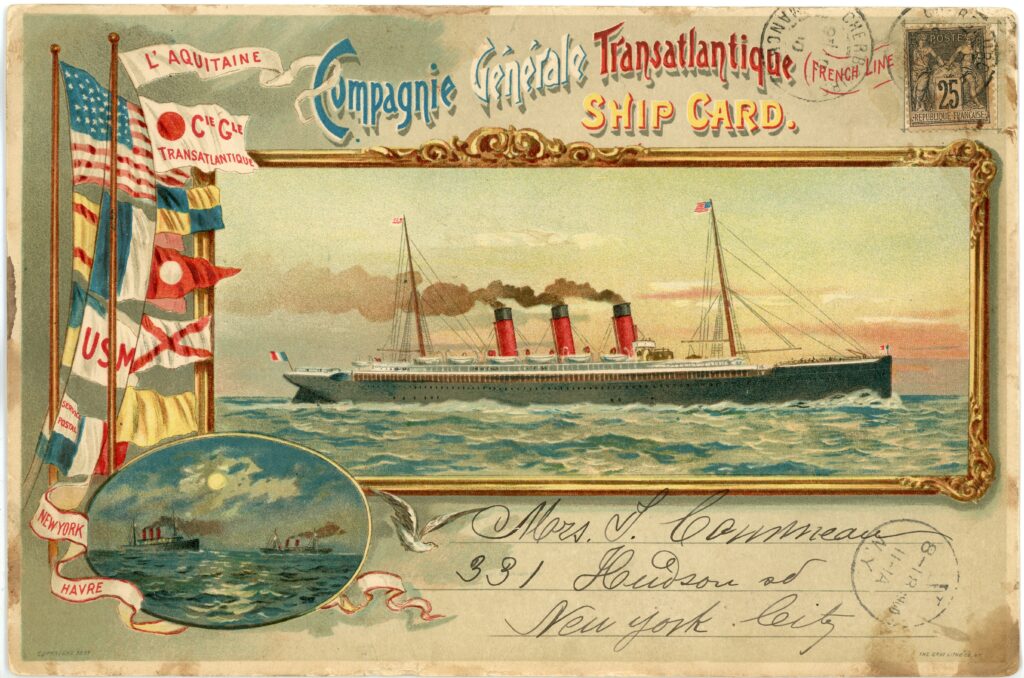
There are around 1,234 items in the collections of the South Street Seaport Museum related to French ocean liners, with a multitude of different object types. The French Line-related objects include menus, postcards, cigarette cards, posters, and brochures, as well as matchbooks, playing cards, and even parts of the ocean liners themselves.
For this project I have been organizing, translating, and interpreting items relating to the French Line. It is extremely captivating to be able to work with so many different types of objects, with each object providing their own unique characteristics. My work has mostly been focused on cataloging while keeping in mind the specific collection it pertains to. A fun opportunity has been the translation of proper names, and coming up with a system on how to input them accurately into our database while still making them searchable to non-French speakers. Diacritical marks (in phonetics, a diacritical mark is a glyph—or symbol—added to a letter that alters its sense, function, or pronunciation) have been an interesting challenge, since they are used in the French language while being absent in English.
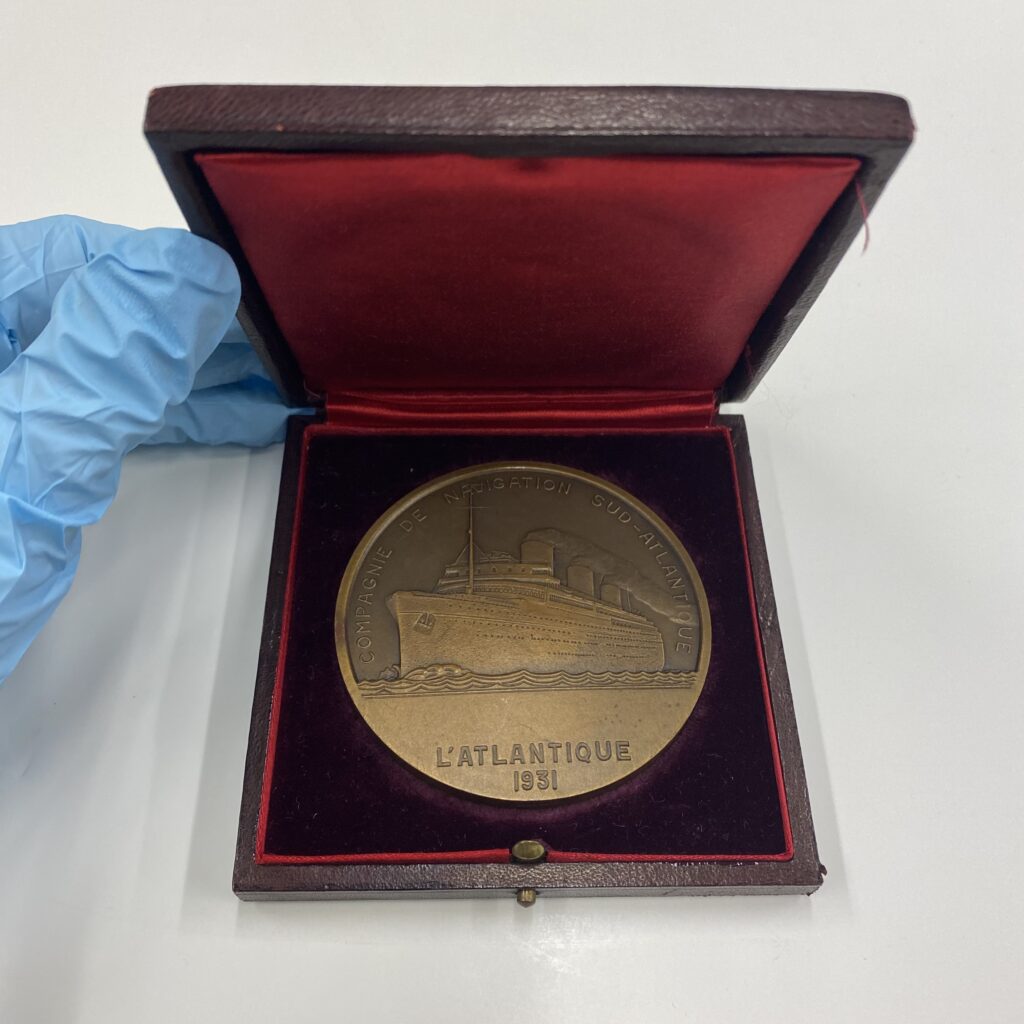
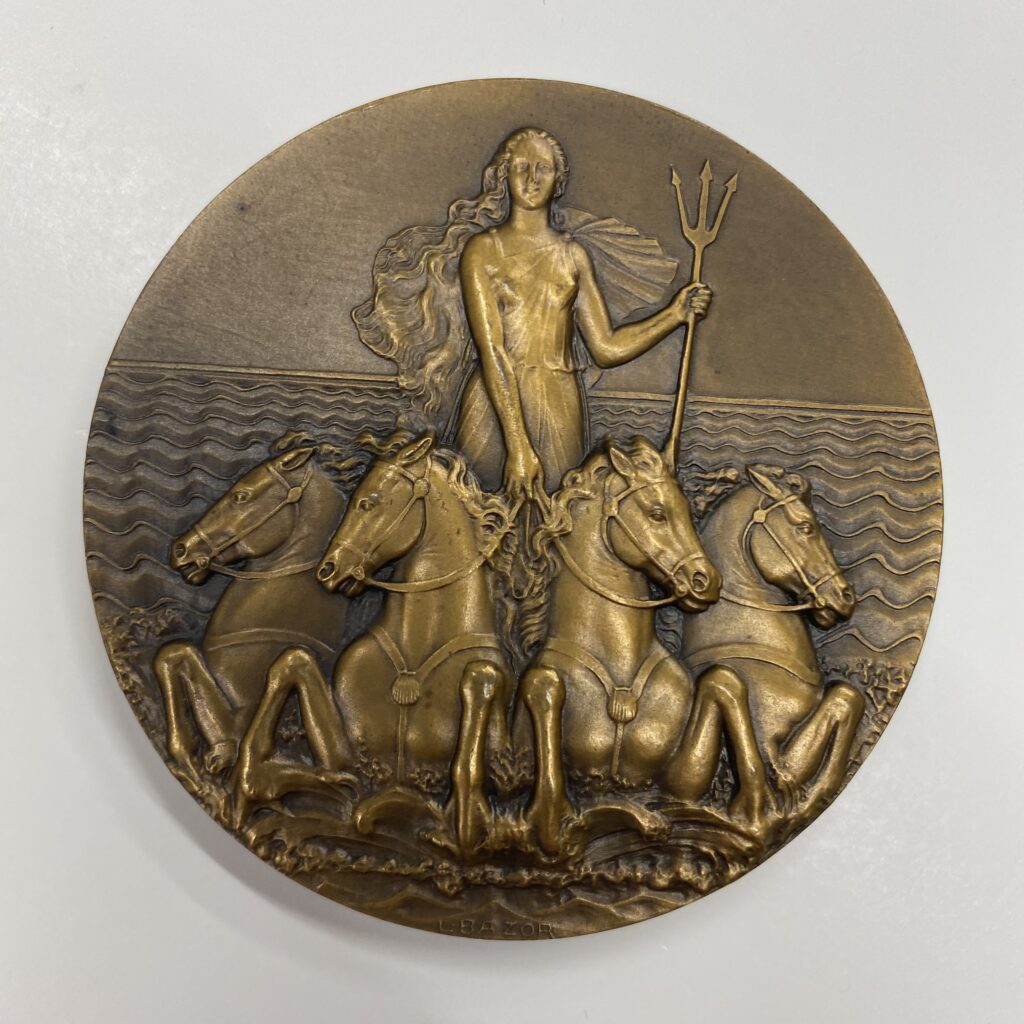
Another interesting aspect of this project has been documenting objects that include references to French culture and history. Sometimes the imagery was clear, like a depiction of Napoléon Bonaparte or a scene from the fables of La Fontaine, while other times they were more subtle, like references to the motto of the French Republic. The objects that caught my attention the most were commemorative medals. These medals hold some lovely representations on them of ancient Greek and Roman mythology. The French Republic borrowed symbols from ancient Roman and Greek times, and it is very interesting to see these symbols used in relation to France’s power on the sea.
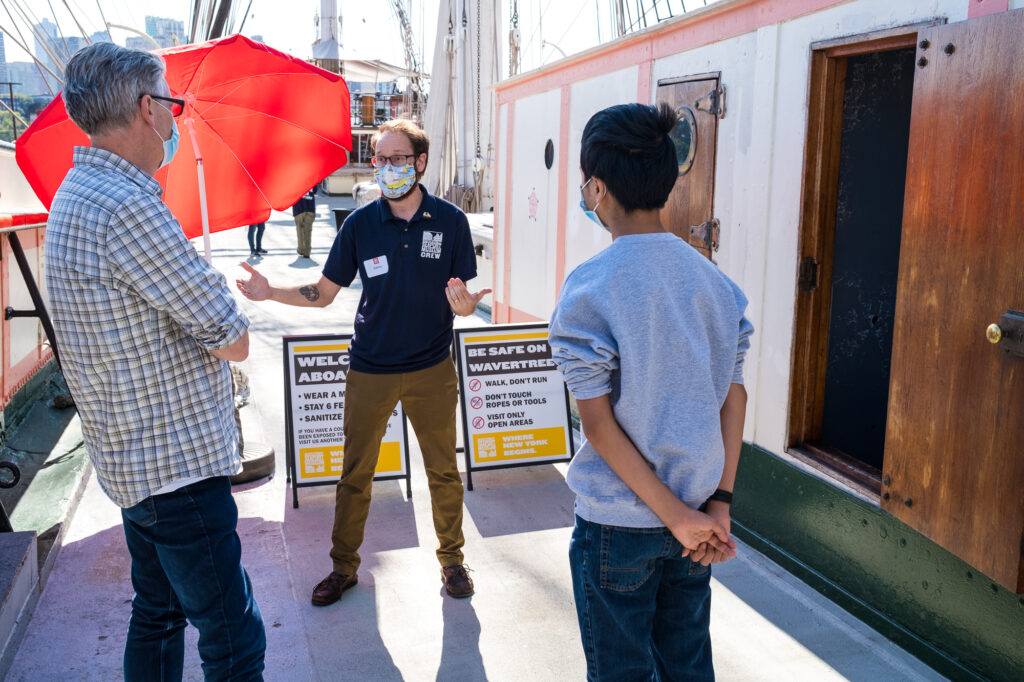
During the month of September and early October, our historic ship Wavertree was open to visitors once again, following New York State, New York City, and CDC guidelines for social distancing and everyone’s health and safety. The public was able to visit all outdoor spaces of the ship. This included the main deck as well as the quarter deck, while being able to peek inside areas such as the fo’c’sle, the cargo holds and the captain’s saloon. The Museum staff encouraged guests to ask as many questions as they had on their minds. We welcomed a great variety of people with different knowledge about ships and in general maritime topics. It was great to see each individual interact with the ship in different ways. I am extremely happy that I had the fantastic opportunity to interact with so many different visitors to discuss maritime history and artifacts tied to the Museum.
Martina Caruso, Director of Collections
The last two months of the year have been action-packed and a bit bittersweet. The Seaport Museum launched a campaign to save the Museum as this pandemic has caused another terrible blow to our existence, the drawbacks of being remote are starting to weigh more heavily on all of us, and we are approaching the end of this fabulous team as December is the last month of internship and volunteering for both Carley and Mathieu.
Over the past two months we continued writing exciting blogs, we researched, filmed, and led a series of virtual building tours of our home, Schermerhorn Row, in partnership with Archtober and Open House New York, launched a series of remote walking tours and stories with Urban Archives, as well as created next year’s work plan.
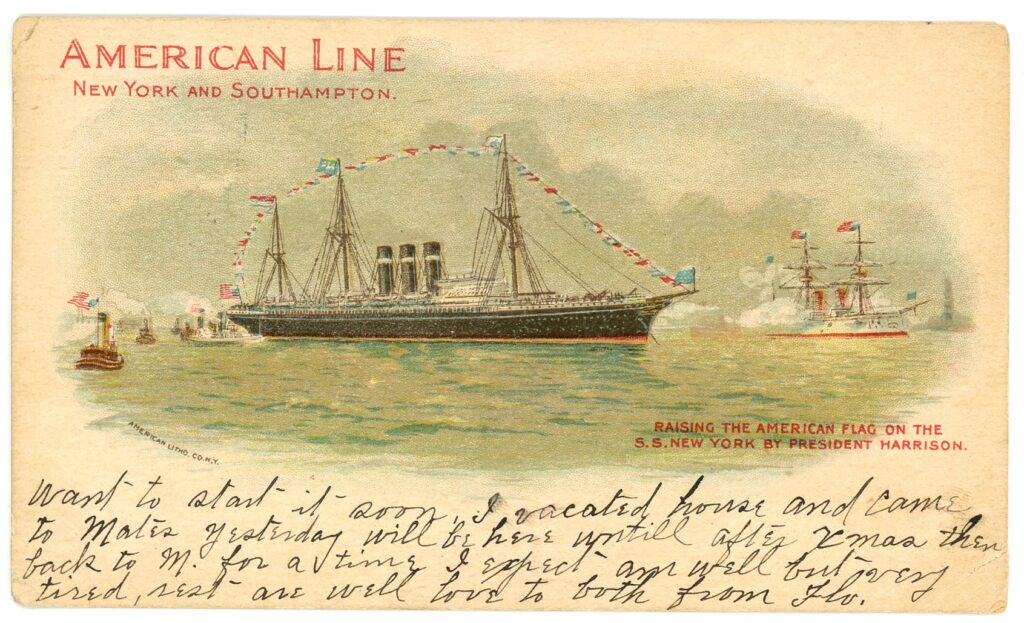
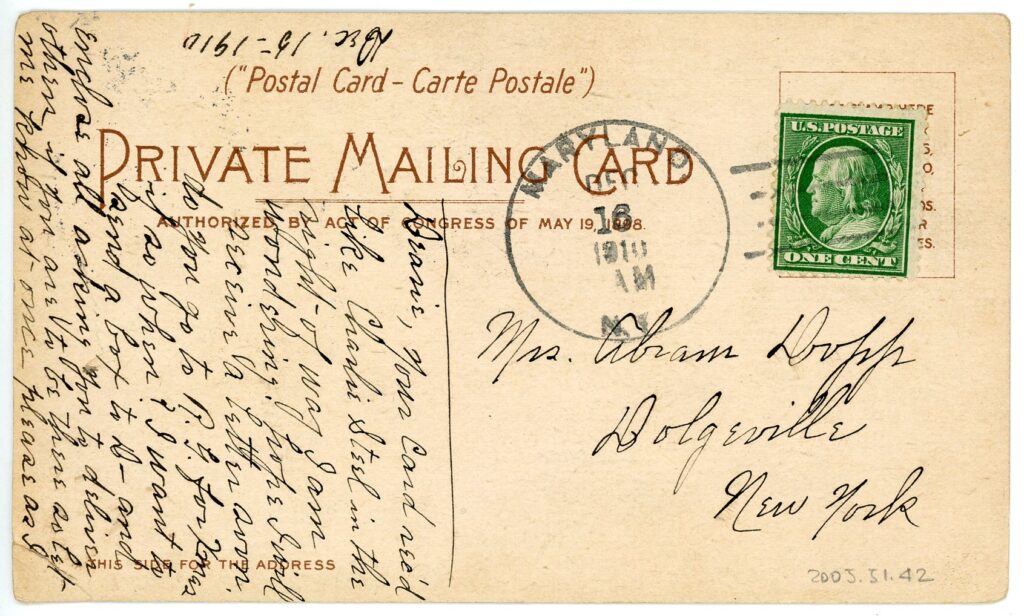
Carley finished her long newspaper inventory, and started a new project with a fascinating collection of maritime themed-postcards that was accepted in 2005 as part of the Museum’s Archives with a temporary inventory number. This collection was re-discovered in 2017 in the Maritime Reference Library by collection management staff while looking for items to be included in the exhibition “Millions: Migrants and Millionaires Aboard the Great Liners 1900-1914.” It was flagged to be formally accessioned and processed at item level, as soon as priorities and other tasks allowed it, due to its rich imagery and the variety of extremely interesting topical points included. So, during this fall, we decided that it was a great moment to dedicate to research, document, and plan to process this group of objects, and similar cases flagged in the past. We look forward to showing them to you next year, when the cataloging and digitization will be completed.
Michelle had the chance to fill in for the storage walk-through for a week when I was unavailable to be on-site, and she mentioned how strange it was to return to storage, after months of staying at home, and be with the thousands of artifacts she used to work near almost every work day.
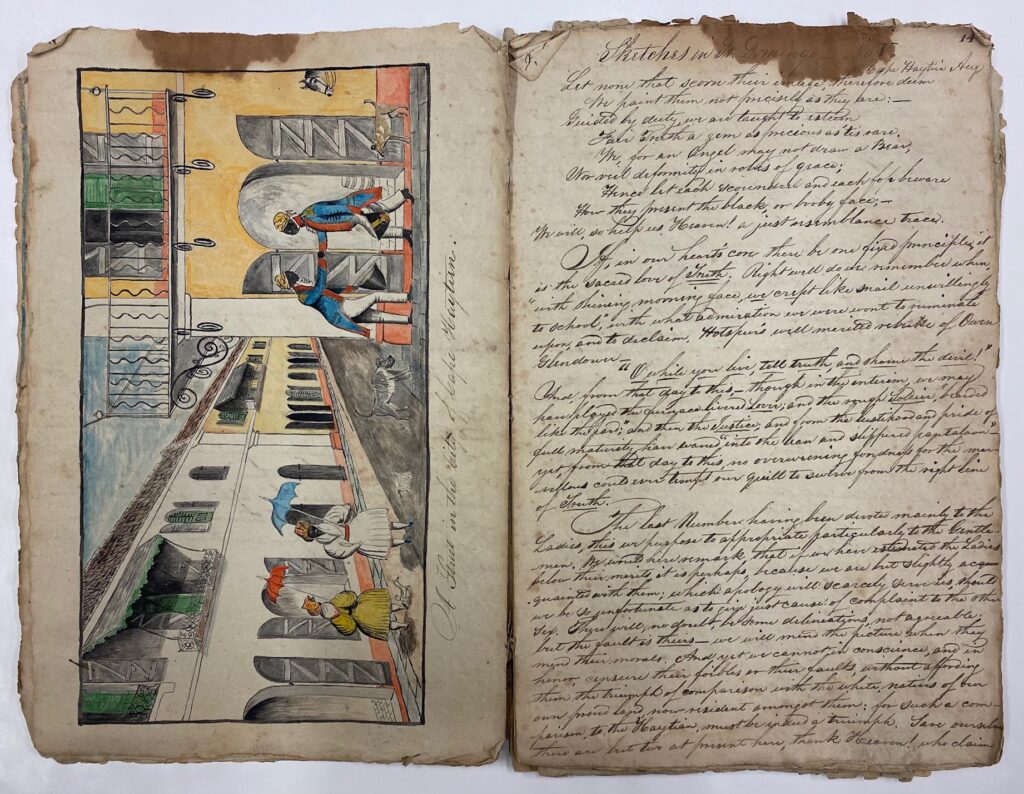
During her walkthrough of the building and checking for any deterioration among the collection, while she was looking for a few ca. 1900 postcards she meant to digitize, she stumbled upon an even greater treasure: an unpublished manuscript from 1837 that had been recorded as “missing” in our database!
This manuscript is titled “Sketches of Santo Domingo” and includes pen and watercolor drawings of the streets, mountains, lakes, and harbor of Cap-Haïtien. This unique object connects to the transatlantic slave trade, the sugar trade, and the greater Atlantic economy in which New York City was a major player.
Due to the turn over of administrations and staff in the Museum’s 52 year history, it is not uncommon to rediscover “misplaced” objects, and it felt good to have a significant find during 2020.
Lastly, the Registrar side of my work continued, with the processing of annual outgoing loans, the updating of policies and procedures, the record keeping of memorandum drafted in the past months, and with our Collections and Curatorial Committee meetings, now virtual, dedicated to reviewing possible acquisitions and deaccessions. Over the past 8 months we received many unsolicited donation offers via emails and phone calls, and thorough screenings had to take place. The Seaport Museum does not actively acquire new artifacts, but we occasionally do make exceptions following acquisition guidelines, and this year we had a few unique generous offers that checked our boxes! We look forward to cataloging and further researching these new items next year, and sharing them with all of you in new blog and social media posts.
Overall, the impacts of the COVID-19 pandemic have disrupted the way in which we work, set priorities, and even interact with one another. Though it is inarguable that the past few months have created immense challenges, this time has also served as an opportunity to improve and create new roadmaps for the future of collections management, documentation and accessibility, remote internships and mentorship of emerging professionals, all while creating digital content and utilizing technology in new ways.
The collections and archives team will be taking a well-earned break over Christmas and New Year, but we’ll be back in the new year with new interns, more blog posts, and new digital programs we know you’ll find interesting and insightful!
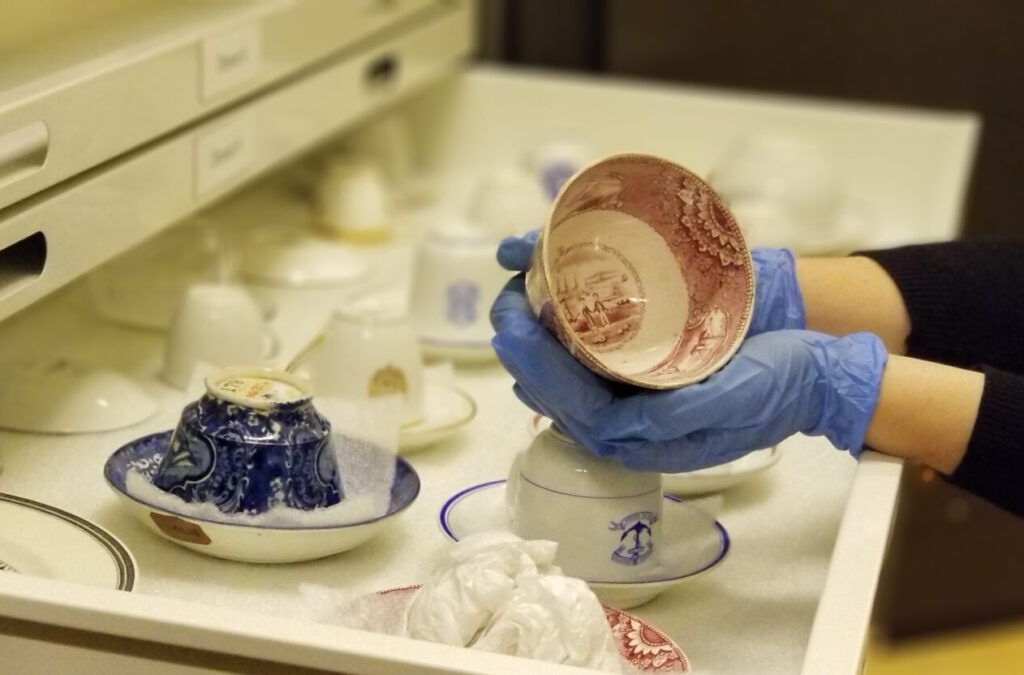
Support Our Work!
Virtual programs like this one are provided at no cost in order to serve our community in unique and engaging ways, no matter where you might be in the world. Help us make this work possible.
References
| ↑1 | Founded in 2008, HathiTrust is a not-for-profit collaborative of academic and research libraries preserving 17+ million digitized items. HathiTrust offers reading access to the fullest extent allowable by U.S. copyright law, computational access to the entire corpus for scholarly research, and other emerging services based on the combined collection. |
|---|

